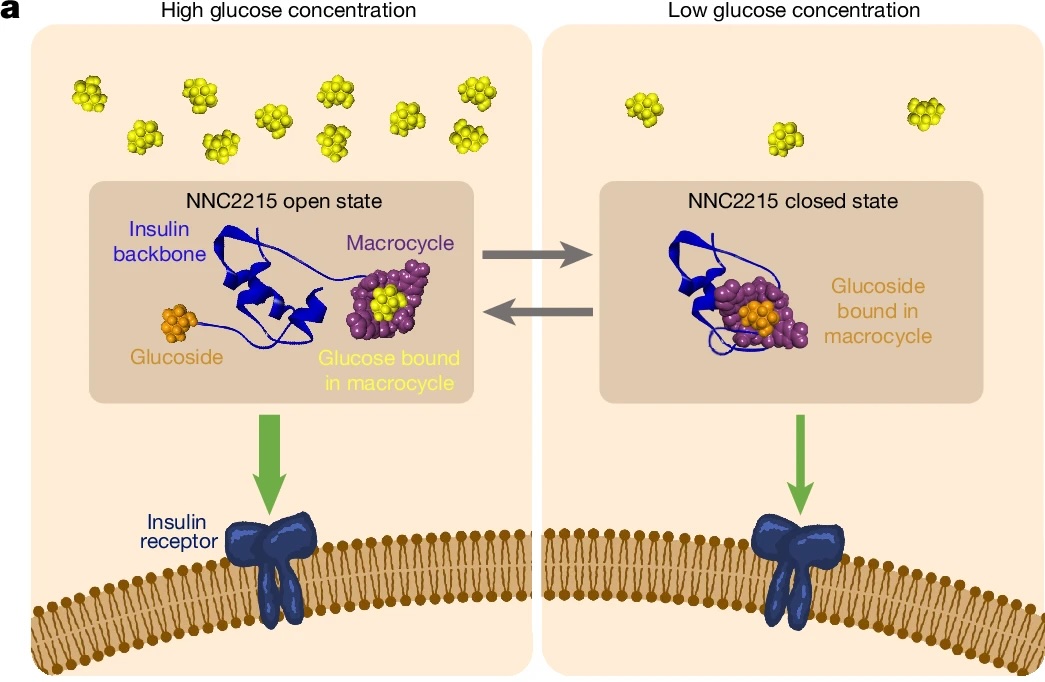The Art of Molecular Design: Insights from Recent Research
The paper titled “Glucose-sensitive insulin with attenuation of hypoglycaemia,” published in Nature on October 16, 2024, exemplifies how chemists approach the relationship between molecular structure and its properties.
Being featured in Nature signifies the paper’s high quality, making it worthwhile to read in detail to understand how the authors implemented and validated their innovative ideas. However, even a glance at Figure 1 provides a clear insight into the underlying concept.

This molecule features two distinct elements at each end of the insulin structure: one side is linked to glucose, while the other is equipped with a macrocycle that can bind glucose. When glucose levels are high (as shown on the left side of Figure 1a), the macrocycle captures free glucose. This binding prevents the macrocycle from interacting with the glucose within the insulin molecule, allowing insulin to maintain its structure (open state) and effectively interact with the insulin receptor. Conversely, when glucose levels are low (right side of Figure 1a), the glucose inside the molecule binds to the macrocycle, altering the overall structure of insulin (closed state) and hindering its ability to interact with the insulin receptor. This principle enables the development of an insulin drug that acts when glucose levels are low, but not when they are high.
Implementing this idea and validating its effectiveness through animal experiments likely presented significant challenges. I commend the scientists who successfully navigated these hurdles.
The straightforward assertion that structure determines function gives rise to such remarkable yet simple concepts. Ideas like Rotaxane, proposed decades ago, have evolved through continuous development into practical solutions that could transform human lives. Observing how simple ideas combine and evolve into more complex (or seemingly complex) outcomes is one of the most rewarding aspects of working in the scientific field.




Comments